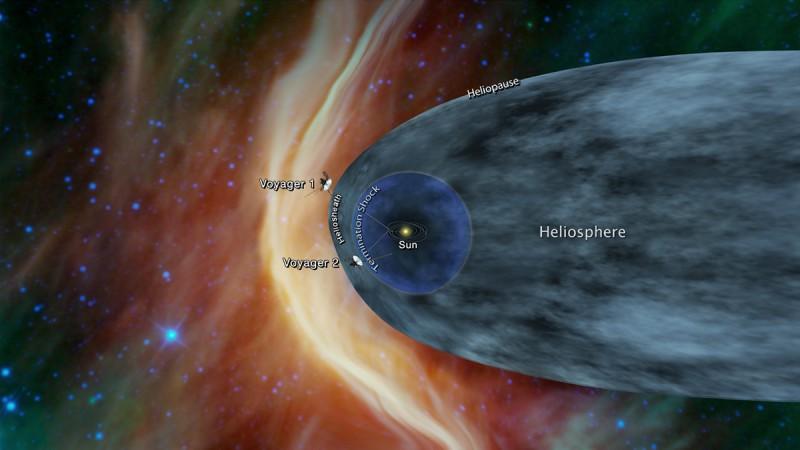
NASA's Voyager 2 spacecraft is currently making its way towards the interstellar space and it appears that the probe is onto something. Recently the American space agency has confirmed that the probe has detected a rise in the cosmic rays, which originally generates from the outside our solar system. Voyager 2 was launched 42 years ago in 1977 and right now, it is floating around 11 billion miles away from our home planet.
The spacecraft has been roaming through the heliosphere's outermost layer since 2007. The heliosphere is essentially the huge bubble around the Sun and the planets and it's rich in solar material and magnetic fields. The team of Voyager experts have been closely watching the journey of the spacecraft and they are waiting for it to cross the heliosphere and enter heliopause, which is the outer boundary of the heliosphere. If the Voyager 2 makes it through the heliosphere, it will become the second man-made object to enter interstellar space; the first one being Voyager 1.
Some cosmic rays get blocked by the heliosphere. So, the mission scientists expect that the Voyager 2 will experience more cosmic rays once it crosses the heliosphere and enters interstellar space and that is exactly what is happening since late August.
The cosmic ray measuring instrument on the Voyager 2 has caught near-about 5% upsurge in the rate of cosmic rays during the late August than the amount recorded during early August. The Low-Energy Charged Particle instrument aboard the spacecraft has also detected similar rise in higher-energy cosmic rays.

Voyager 1 had experienced this same kind of rise in cosmic rays during May 2012, which was around three months before the spacecraft had crossed heliopause and entered interstellar space.
However, the Voyager scientists also note that increased cosmic ray is not the only and definitive proof of the spacecraft entering the intersteller space. Voyager 2's location is different from that of Voyager 1 and that difference may lead to a different timeline for Voyager 2.
"We're seeing a change in the environment around Voyager 2, there's no doubt about that. We're going to learn a lot in the coming months, but we still don't know when we'll reach the heliopause. We're not there yet -- that's one thing I can say with confidence," said one Voyager Project Scientist Ed Stone from Caltech, Pasadena.

















